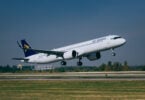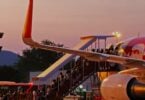Being taken as an aviation expert of sorts, I am often asked about just how safe the Boeing B787 Dreamliner is to fly, and the number of questions seems to be increasing the closer we are getting to April 4 when Kenya Airways (KQ) will welcome their latest acquisition at Nairobi’s Jomo Kenyatta International Airport. There can be no doubt that the aircraft had a troubled start. First delayed by over three years for their first deliveries as a result of having to learn the complexities of manufacturing a revolutionary new aircraft which incorporates the use of carbon fiber elements to reduce weight – and as a result uses some 20 percent less fuel compared to other wide bodies aircraft now in service – no sooner were the first birds delivered to their launch customers around the world did other problems strike. New technology Ion Lithium batteries, never used before on commercial airliners, posed problems with overheating and fires erupted on several aircraft, thankfully when on the ground, as the batteries overheated, melted their bodies and flared up.
A three month grounding of the entire fleet early last year was the result and a frantic search for adequate and safe solutions went underway, leading to a series of modifications before the FAA and other regulatory bodies re-certified the aircraft type and flights were resumed.
Then, as now, when asked if I would fly on the B787 the answer was a resounding yes, not just because I met the team while they were in Nairobi in December 2011 but more so for the ongoing interaction we had since then and their often candid responses to questions asked about the state of affairs of Boeing’s first true next generation aircraft.
Following a series of reports here that Kenya Airways would get their first B787-8 in early April, more questions came my way about safety issues, regardless of the fact that KQ’s arch rival Ethiopian is now already flying 6 of these birds and continues to take delivery of more of them.
Considering these circumstances I felt it appropriate to obtain from Boeing their latest read on the B787 and the position of the American FAA, the world’s leading aviation regulatory body and this is what came back late yesterday. Both Boeing and the FAA had, following the events of early last year, agreed on a joint comprehensive review and the just published findings, in summary are shown below:
START QUOTE:
Joint Review Confirms Boeing 787 Meets Intended High Level of Safety
– Results of FAA/Boeing report validate company confidence in 787 design
– Recommended improvements already being implemented
EVERETT, Washington – The U.S. Federal Aviation Administration (FAA) and Boeing have completed a comprehensive review of the 787’s critical systems. The joint review, initiated in January 2013, included an examination of the processes for the design, certification and production of the 787-8. The review’s findings validate the integrity of the airplane’s design and confirm the strength of the processes used to identify and correct issues that emerged before and after the airplane’s certification.
The review concludes that the 787 meets the intended high level of safety expected by the FAA and Boeing. The report includes recommendations aimed at further strengthening the FAA and Boeing’s processes.
“We welcomed the opportunity presented by this joint review of the 787 and its in-service performance,” said Boeing Commercial Airplanes President and CEO Ray Conner. “The findings validate our confidence in both the design of the airplane and the disciplined process used to identify and correct in-service issues as they arise. I am grateful for the hard work of the joint review team and for its recommendations, which will allow us to further improve our processes as we move forward.”
The review team outlined four recommended improvements for Boeing. Three of the recommendations focus on improving the flow of information, standards and expectations between the company and its suppliers. Boeing has already taken significant steps to implement these recommendations.
The fourth recommendation encourages Boeing to continue implementing and maturing the gated processes for development programs.
“Gated process” refers to the disciplined criteria followed as a new airplane model is developed. This ensures a sufficient level of maturity is gained before a program proceeds to key milestones such as design completion, production start and entry into service.
Boeing has made a range of improvements to its airplane development processes since the start of the 787 program. These efforts included a restructuring last year to bring all commercial airplane development programs under one umbrella organization.
END QUOTE
In addition is the full report by the FAA now available too and can be accessed, all 71 pages of it, by clicking on this link: http://www.faa.gov/about/plans_reports/media/787_Report_Final.pdf
I agree that some people have a fear of flying, a phobia even, and some of those who do fly without a second thought might have their own worries about stepping on board of a B787 Dreamliner. I, a regular flyer, do not have such sentiments and in fact am looking forward to not just seeing Kenya Airways’ new bird arrive in Nairobi but actually board the aircraft and fly with it. By providing the information above it is also hoped that some of the unfounded allegations about the safety of this aircraft type can be put to rest and that some worries be addressed by availing the facts as they are now available.
Happy Landings to all B787s, always, as the clock is ticking down towards the arrival in two weeks of Kenya Airways’ first B787, with 5 more deliveries due this year and another 4 at least next year.






















